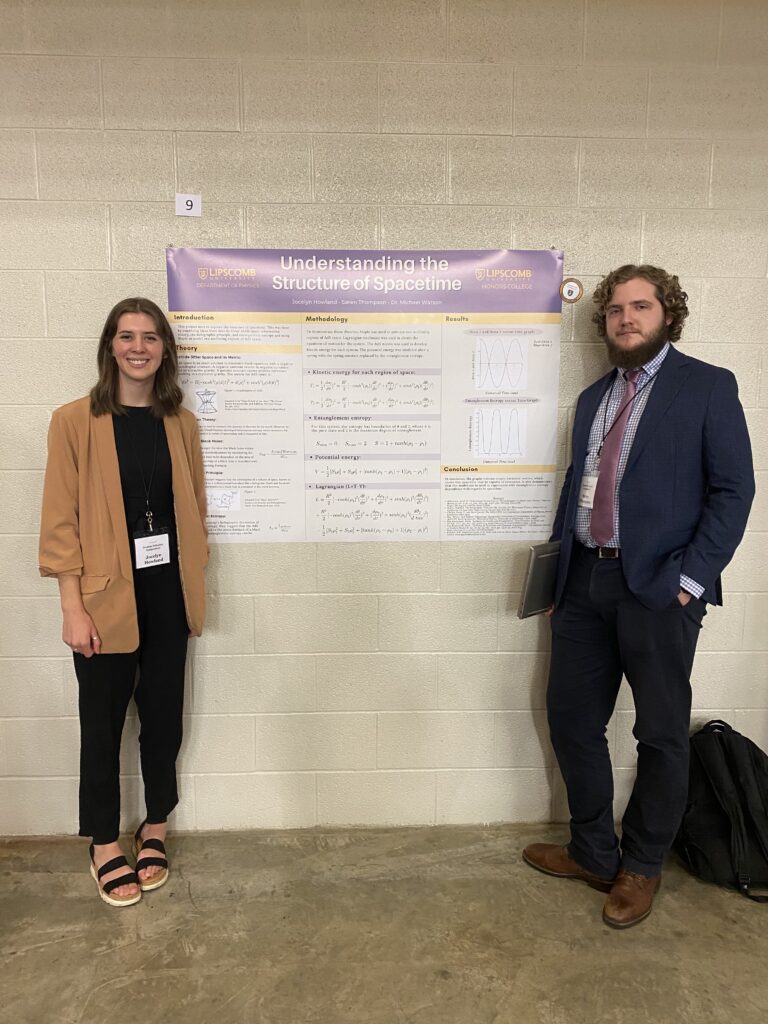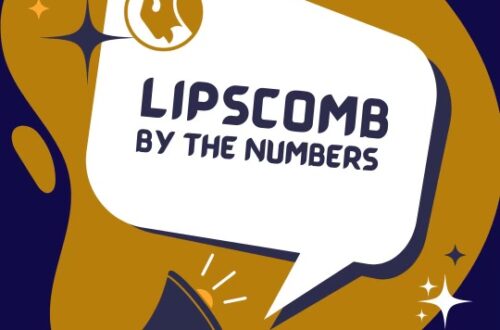
Black holes may be capable of resonance
The only two Physics majors at Lipscomb University presented at the annual Student Symposium on Thursday, April 13th.
This year, Jocelyn Howland and Søren Thompson walked through several different theories and equations that led them to their final conclusion- that spacetime may be capable of resonance. If that doesn’t make sense to you yet- hang on, we’ll get there.

To make this final conclusion, the two Physics majors used thermal physics, general relativity, and quantum mechanics- all of which they had little or no experience with prior to their time working on this presentation.
Now, what is a black hole anyway? A black hole is created when a star collapses on itself.
Howland starts off by sharing the theory behind Anti-de-Sitter space and simplifies it into terms that are easier to understand.
“…it just means negative curvature in space. So if you think of a piece of paper, and you bend it towards each other, and then if you had two marbles or whatever on either side, they’re gonna come towards each other, right?”
Anti-de-Sitter Space is neither expanding nor contracting. It looks the same at all times.
Next, Howland explains information theory, and that to escape a black hole, you would need to travel faster than the speed of light.
“… so even information can’t escape a black hole which means that the mass inside of a black hole…we would never know it’s there because that information telling us that there’s mass down there can’t escape,” Howland explains.
When someone asked Howland if this meant that the Universe can shrink, she responded, “Not necessarily, more so that we would lose information and never be able to get it back.”
Next, the group explains the Holographic Principle. Howland says to think of when you have a water glass, and if you’re looking at it from the outside, it tells you that there’s water by looking down into the glass.
She says, in the same way, when you are looking at a black hole all the information is stored on the ‘event horizon’
“…the event horizon like boundary area is basically like where all the information is for black holes,” Howland continues, “so if I’m entering a black hole and you’re observing me from far away, you’ll see me get to the event horizon. Then, you’ll see me stay there for eternity. You’ll never see me enter into the black hole, because the light space-time diverts time as well…so the amount of time that my light gets to you will be infinite, so you’ll just see me stuck there forever.”
With other various theories and equations, Thompson and Howland reached their final conclusion- that spacetime may be capable of resonance. Thompson tries his best to give an earthly example.
“…there’ll be like a certain note within like your car or house or something that will actually notably shake or vibrate, that’s because the music and the environment are in resonance with each other. So that’s kind of an example. This is where basically the whole system comes to the most reactive…” Thompson states.
In the same way, he and Howland use a visual to show the harmonic motion of two black holes that could be capable of resonance.
When the group was asked about what resonance would look like, Thompson said, “It certainly wouldn’t be simple. And what resonance would look like, it’s probably hard for us to say.”
And, you might ask, how does this affect the world?
“There may never be a back-to-application for holographic principle. The state of the field is in such a stage of infancy that it probably be difficult to say, who knows what it could be,” Thompson says. “It could end up being super helpful for various engineering practices, but we don’t really know what the specs of applications would be yet.”





